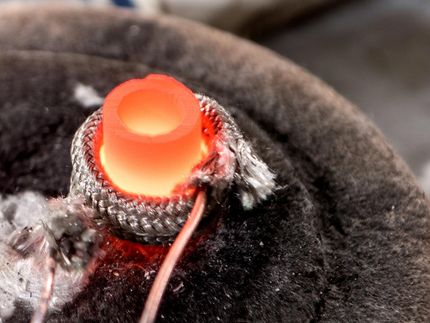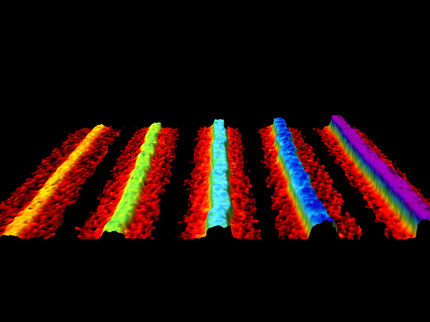Method stabilizes, enhances phosphorene
Advertisement
Two years ago, Northwestern University's Mark Hersam discovered a way to stabilize exfoliated black phosphorus - or phosphorene - a layered semiconductor that chemically degrades in open air but shows great promise for electronics. By encapsulating it in aluminum oxide, he was able to stabilize phosphorene's reactivity to oxygen and water.
"The problem is that now the phosphorene is buried underneath the aluminum oxide coating, which limits what we can do with it," said Hersam, Walter P. Murphy Professor of Materials Science and Engineering at Northwestern's McCormick School of Engineering. "Wouldn't it be better if we could stabilize phosphorene without occluding its surface?"
Hersam and his team have done just that.
By using organic chemistry to covalently react a single-molecule-thick layer onto phosphorene, the team effectively imparted the same passivation it achieved with alumina back in 2014. But this time the layer is thin enough to leave access to the material's surface.
"If it's going to be useful for applications such as sensors, then whatever you want to detect needs to be able to interact with the material," Hersam said. "The thick layer of aluminum oxide prevented any atmospheric species from reaching the phosphorene surface, so it could not be used as a detector."
In recent years, phosphorene has captured attention as a powerful semiconductor with high potential for use in thin, flexible electronics. Its instability in open air, however, has prevented it from being tested in possible applications, such as transistors, optoelectronics, sensors, or even batteries. Now it turns out that the covalently bonded, single-molecule-thick layer might even increase phosphorene's value for use in these applications. The team discovered that not only does the layer prevent phosphorene from degrading, but it also improves its electronic properties.
"The chemistry influenced the flow of charge through phosphorene," Hersam said. "We achieved improvement in charge mobility, which is related to the speed of the transistor, and how well it switches in an integrated circuit."
Now that Hersam's team has created a stable version of phosphorene, it plans to explore these potential applications. The next step is to create optimized devices based on phosphorene and compare them to devices made with alternative materials.
"We can imagine many possibilities," Hersam said. "The future will teach us exactly where phosphorene has a competitive advantage."

































































